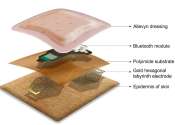High-performance anode for all-solid-state lithium batteries is made of silicon nanoparticles
A new study led by NIMS researchers reveals that in solid electrolytes, a silicon anode composed only of commercial silicon nanoparticles prepared by spray deposition exhibits excellent electrode performance, which has previously ...
Dec 24, 2019
0
17









